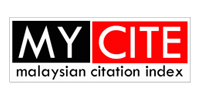Arthropods-mediated Green Synthesis of Zinc Oxide Nanoparticles using Cellar Spider Extract: A Biocompatible Remediation for Environmental Approach
DOI:
https://doi.org/10.58915/ijneam.v17iJune.860Keywords:
Arthropods, Cellar Spider, Morphological Study, Synthesis Nanoparticles, Zinc OxideAbstract
This study presents an eco-friendly approach to synthesizing zinc oxide nanoparticles (ZnO NPs) using extracts from cellar spiders, addressing environmental and health concerns associated with conventional methods. The spider extract efficiently reduced zinc acetate dihydrate, and the synthesized ZnO NPs underwent comprehensive quantitative characterization, including size, shape, morphology, surface chemistry, thermal stability, and optical properties using Fourier-transform infrared spectroscopy (FTIR), X-ray diffraction (XRD), zeta potential measurements, thermogravimetric analysis (TGA), and UV-vis spectroscopy. The nanoparticles exhibited intended characteristics, and their adsorption capability for methylene blue (MB) was quantitatively assessed using the Freundlich isotherm model and pseudo-second-order kinetic model, providing numerical insights into MB removal efficiency. The study demonstrates the potential of these green-synthesized ZnO NPs for applications in environmental remediation, wastewater treatment, and antibacterial therapies, contributing to both sustainable nanomaterial development and quantitative understanding of their functional properties.

















